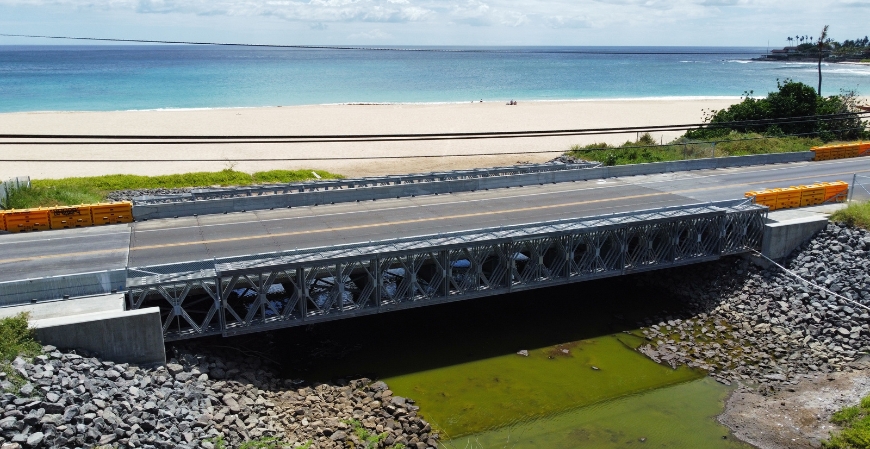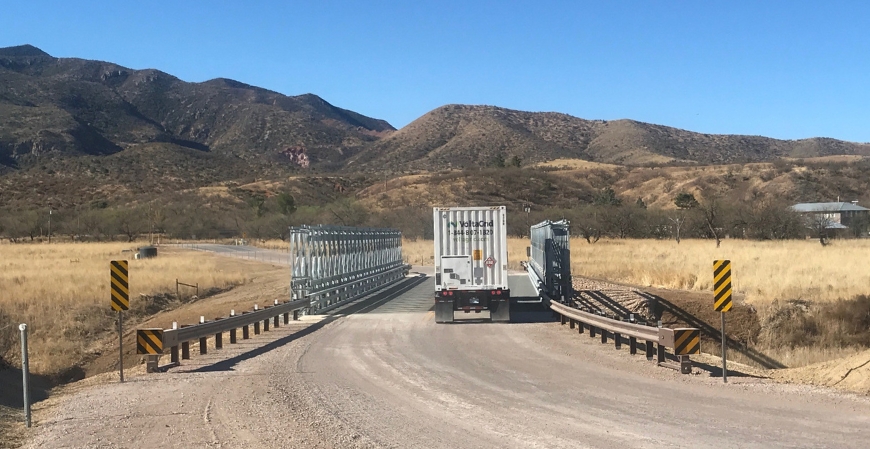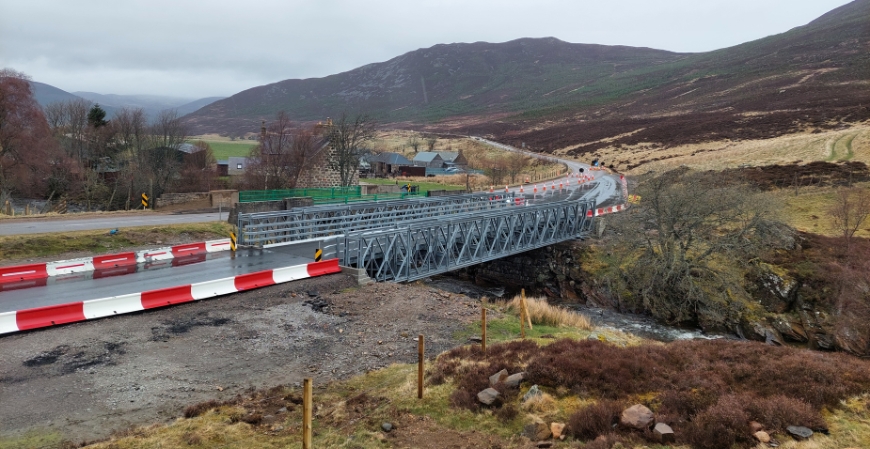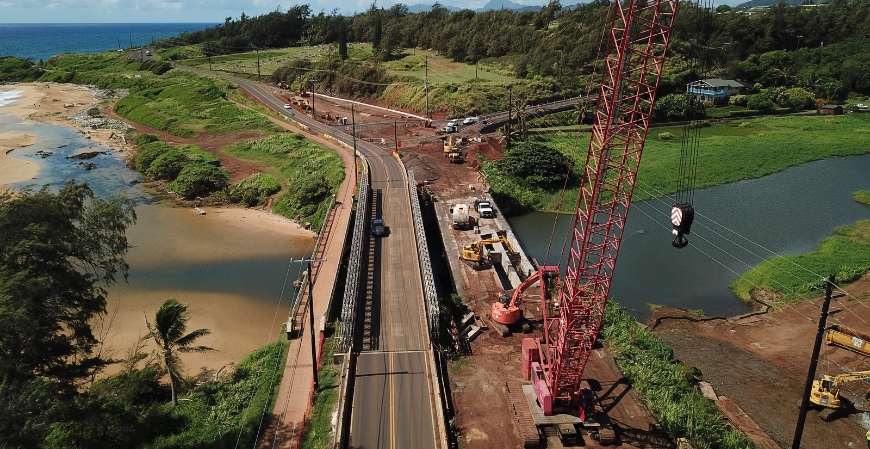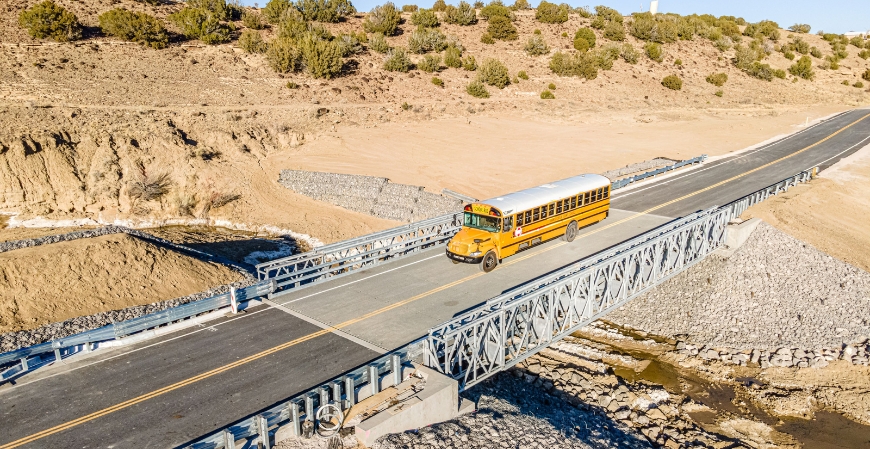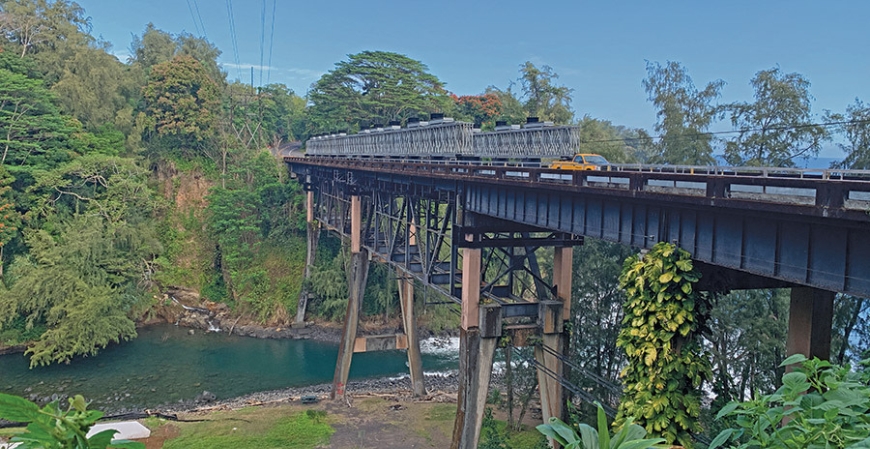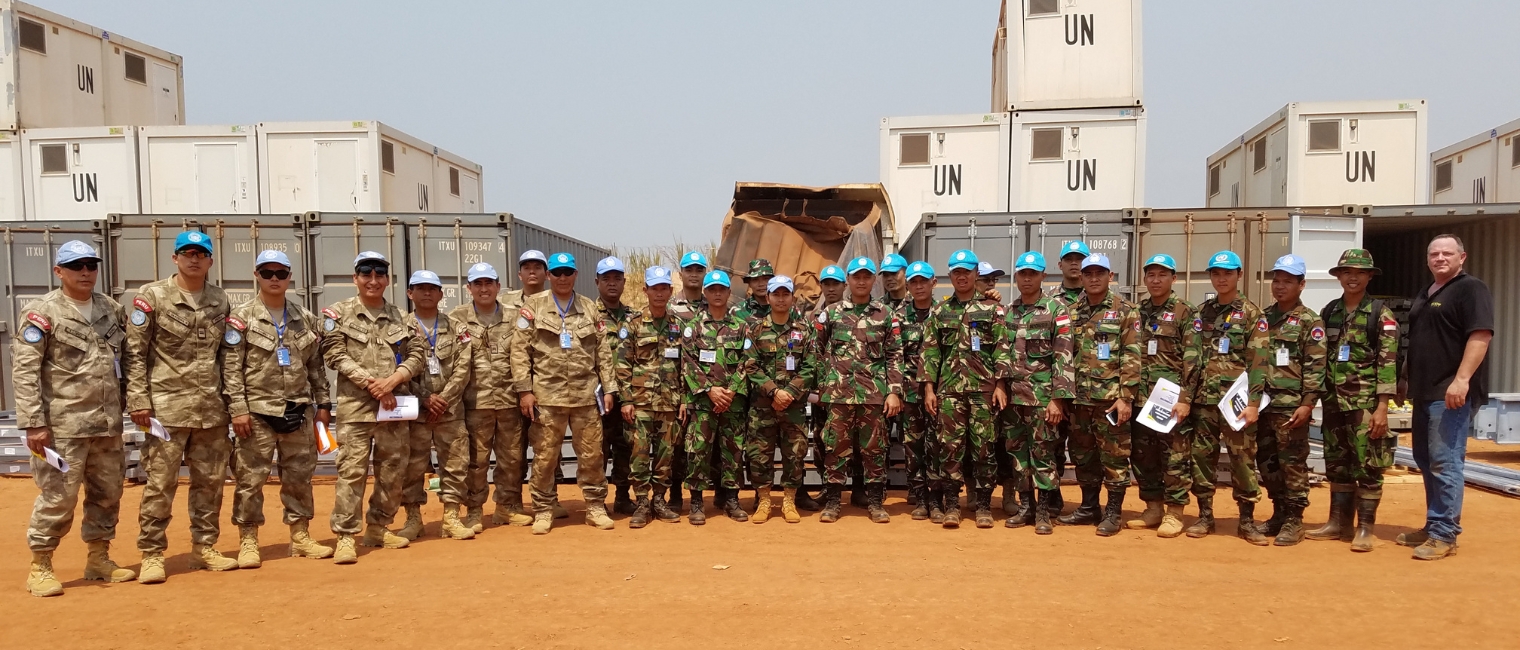
Structure continues to support U.N. peacekeeping mission
The United Nations Organization Stabilization Mission in the Democratic Republic of the Congo (MONUSCO) is a peacekeeping force established by the United Nations Security Council in 2010. Its mandate includes the protection of civilians and humanitarian personnel and support of the Government of the DRC in its stabilization and peace consolidation efforts.
As part of its mandate to promote stability in the region, MONUSCO purchased and installed a modular Acrow steel bridge to strengthen transportation infrastructure in the region. The new one-lane 30.48 meter-long (100′) bridge serves to provide vehicular access between the village of Hombo and the nearby city of Bukavu, previously linked by only by a footpath. Opened to traffic in 2012, the bridge is providing increased accessibility to medical clinics and schools and the possibility of greater economic opportunity for the residents of Hombo.
To date, thousands of Acrow bridges connect people and communities across Africa. Modular components make them a perfect solution for challenging locations as they can be shipped in standard 6.1 meter (20′) containers and transferred to trucks for delivery to the final destination where they can be installed rapidly using local labor and minimal equipment.
Designed and manufactured with high-strength galvanized U.S. steel for a service life of 75-100 years, they require minimal maintenance in even the most rugged conditions and play a vital role in restoring and rehabilitating critical infrastructure assets all over the world.

